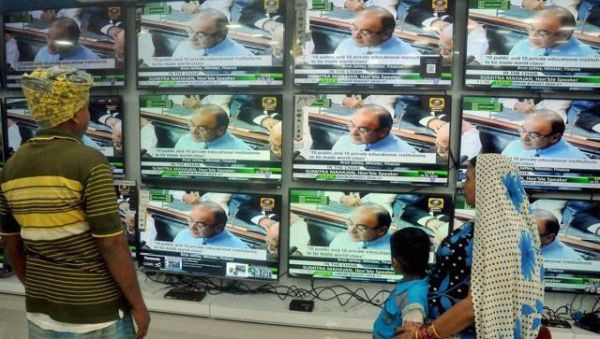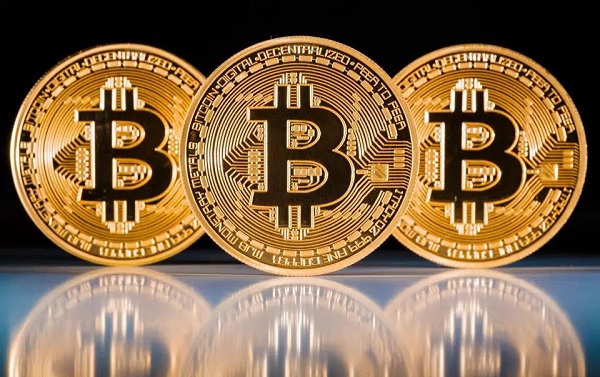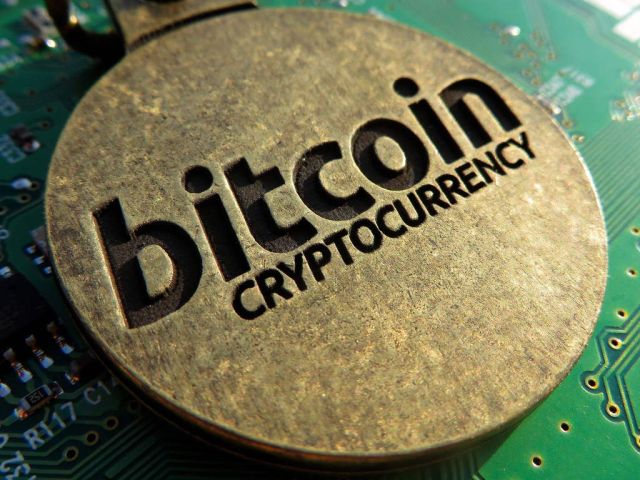
FM needs to hear all sides before acting against cryptos
 By Rohan Juneja & Vatsal Srivastava,
By Rohan Juneja & Vatsal Srivastava,
Nothing is more powerful than an idea whose time has come. With the total market capitalisation of the cryptocurrency universe at more than $500 billion, many are wondering whether these digital currencies represent that big idea.
Non-believers in cryptocurrencies have a standard answer: Blockchain is the big idea. Digital currencies are a bubble.
It is important to highlight the importance of decentralisation in the world of blockchain and how cryptocurrencies are a result of that since that is what incentivised the coders.
While we welcome and appreciate the government using blockchain technology, it is important to note if one ends up having a server inside a government department doing the work, then it won’t be very different than existing centralised databases. A private blockchain is only as good as the users allowed to edit it. There is no inherent security like the proof of work concept in Bitcoin.
As of today, the sheer size and volumes of the cryptocurrency market make it a force to reckon with. One cannot think of the underlying blockchain technology in isolation of cryptocurrency transactions without which we would have an empty ledger.
Regulators and policymakers must now lay out a clear roadmap on how they intend to regulate cryptocurrencies. In order to put a regulatory framework in place, regulators must accept that owning and trading cryptocurrencies is legal and that they envisage these digital currencies being an integral part of the global financial system going forward.
While Finance Minister Arun Jaitley in his budget speech did express his bias against cryptocurrencies, we believe there is a need for healthy dialogue around this issue. Even if Indian authorities want to stick by their categorisation of cryptocurrencies as illegitimate and illegal, sound arguments must be provided to back why they hold their view.
Below are some issues where we believe all stakeholders must have an informed debate on.
Anonymity: One of the main concerns voiced by governments and critics of Bitcoin and other cryptocurrencies is the anonymity of cryptocurrency transactions. It is a common belief that Bitcoin transactions are impossible to track and can aid terrorists, criminals, tax evaders, etc., in avoiding detection by government agencies.
This, however, is just a myth. While cryptocurrencies vary in their level of anonymity, some of the biggest ones — Bitcoin, Ethereum, Ripple, etc., are just pseudo-anonymous. What this means is that while every wallet has a crypted alpha-numeric address instead of a real person’s identity — and every transaction seems to be between unidentified entities — once any part of the chain is linked to a real world identity, all the transactions ever been made by that entity can easily be tracked since the whole blockchain is in the public domain.
Today, most major exchanges around the world require completion of KYC before being able to buy or sell cryptocurrencies — this links the very first transactions of most individuals to their real-world identities. Additionally, web trackers and cookies on merchant websites are notorious for passing on user data such as purchase details, names, email addresses, etc., to third parties and this breach of anonymity will only rise with the increased use of cryptocurrencies for making online purchases.
While there are still many ways of making transactions more hidden than they are by default, by using more anonymous cryptocurrencies like Monero or employing mixers or using browsers like TOR, the majority of individuals in this space today are there for the love of blockchain and/or for speculation purposes, and would be more open to regulatory oversight than the government might believe.
Security: Many investors, and consequently governments, get spooked (and rightly so) by cyber-attacks targeting cryptocurrency wallets and exchanges and some have even deemed the technology unsafe. The infamous Mt.Gox breach of 2014 and the more recent hacking of Japanese cryptocurrency exchange CoinCheck, where hackers made away with close to $500 million worth of cryptocurrency, have only affirmed these fears. Online forums are also rife with users claiming to have lost their private keys and ultimately access to their wallets with no way to claim the deposits back.
Is this the first time criminals have targeted a store of value? Even skipping through the countless incidents of thefts, big and small, through hundreds of years of traditional banking, one would find it hard to argue that the current banking system is void of security breaches. In February 2016, cyber criminals stole $81 million from Bangladesh Bank, compromising all security features in place. According to a report by Javelin Strategy & Research, consumers in the US lost more than $16 billion in 2016 to identity theft or fraud. Cybersecurity Ventures predicts that by 2021, cybercrime will cost the global economies $6 trillion annually. The banking system or any other stores of value, have forever been, and will continue to be, a target for criminal elements and breaches can be avoided only by continuous innovation.
The blockchains behind most cryptocurrencies protect themselves against malicious users through a consensus-building mechanism known as Proof of Work. Once a computer wins the initial race to get the right to add the next block of transactions, the other miners collectively verify if the transactions added are actually valid or not and the transactions are often not confirmed till the next few blocks are added on top. This means that in order to add a transaction that didn’t actually happen to the blockchain, a miner would need to have 51 per cent or more of the total network hashrate (computing power) — which is extremely expensive and very unlikely to succeed.
Individual coin holders can protect themselves by following a few basic preventive measures like 1) Never leaving your currencies in an exchange wallet 2) Moving currencies to cold wallets or offline storage 3) Keeping back-ups of all private keys in hard copy in a safe place.
Monetary policy and cryptocurrencies: Do cryptocurrencies pose a substantial threat to central banks and how will monetary policy work if the so called “masters of the universe”, aka central bankers, lose their power to set interest rates?
Firstly, let us accept that the purchasing power of fiat currencies has consistently diminished and the ZIRP (Zero Interest Rate Policy) era where endless cheap money (money supply) was pumped into the system has led to many spillover effects including inflated asset prices. It is for the first time in financial history that we have seen stocks, bonds, commodities and real estate all rise at the same time. The only reason these policies have not created runaway inflation was due to subdued aggregate demand.
In that sense, would we not be better off with a monetary system governed by a computer algorithm? It would be “a digital cash supply free of political manipulation”, as David Andolfatto, Vice President, Federal Reserve Bank of St. Louis, put it.
Policymakers need to make clear what they think about money supply when it comes to cryptocurrencies. Now let us assume that a cryptocurrency, say Bitcoin, were to partially supplant central bank fiat currency.
The agreed protocols that govern Bitcoin are effectively its monetary policy. Miners expend computing power to verify the legitimacy of transactions and record them. In return, these Bitcoin “miners” get paid in Bitcoin. This leads to an increase in the supply of Bitcoin.
But this growth of Bitcoin money supply is constrained by the increasing difficulty of verifying transactions. As more and more computing power is needed to verify each transaction and create new Bitcoin, which means that the total supply gradually approaches its limit of about 21 million.
Another concern for policymakers is how an asset so volatile be accepted as a store of value. From just a money supply and money demand framework, this volatility can be attributed to the fact that the above money supply rule cannot respond fast enough to changes in money demand, leading to high price fluctuations or volatility.
And how would money supply in a partial crypto dominated world react to the underlying state of the economy? Can there be an in-built set of rules? And, more importantly, will they always be followed? There is a reason central banks do not follow the Taylor rule blindly. Sometimes a preset mandate of a central bank — say a specific level of unemployment and inflation — which when achieved would lead to certain policy measures — say a 25 bps interest rate hike — do not play out as per the rules laid out. So are the policymakers worried that a protocol where the verification reward for the miners are a function of the state of the economy cannot be hard-coded?
Another issue which may be on the minds of policymakers and central bankers is that while cryptocurrencies are “borderless” and may well promote greater capital flows and trade, will the Bitcoin (or any other crypto) “area” be similar to an “optimal currency area”? As the whole idea is to be decentralised, how can there be a central authority directing fiscal transfers making up for the inability to adjust exchange rates in that “area”?
Many old debates in monetary economics — such as Milton Friedman’s constant money growth rule versus the discretion over interest rates that has prevailed over the last two decades — will prop up again in answering the above question pertaining to the new age of monetary policy in the digital currency era.
Change is always hard to accept. During the gold rush, central bankers also called gold an asset without any intrinsic value as it gives no cash flows which one could use for discounting. But it has stood the test of time and commands a systemic risk premium.
(Rohan Juneja is co-founder and country manager of Nebula exchange, India. He can be reached at rohan534@gmail.com. Vatsal Srivastava is a Consulting Editor with IANS and a blockchain enthusiast. He can be reached at vatsal.sriv@gmail.com)
—IANS



